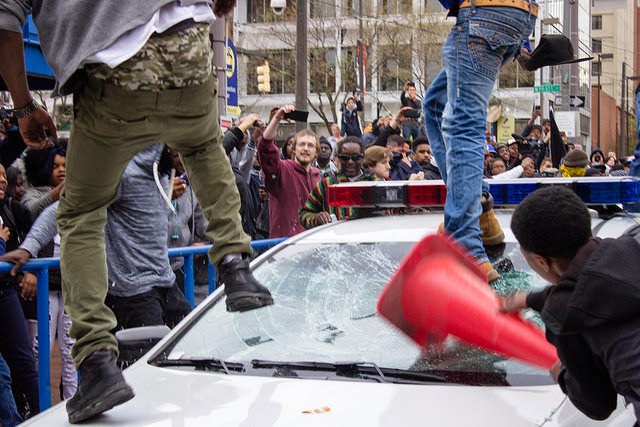Let me take this opportunity to offer a few tips about creating blog posts that will attract readers and enhance the search engine optimization (SEO) of a blog site. First, use headings and subheadings to clearly organize your content and guide the reader's eye.
Blog Post Best Practices
For instance, if you want to blog about the riots, instead of writing simply, "The media have provided extensive coverage of rioting in Baltimore, Md.," try adding keywords like this: "News outlets like The New York Times has provided extensive coverage of rioting in Baltimore, Md. This coverage has included an analysis of statements by leaders like President Obama, Maryland Governor Larry Hogan, and Baltimore Mayor Stephanie Rawlings-Blake."
Insert hyperlinks. Hyperlinks encourage audience engagement and provide readers with a direct source of information. You don't want to steer readers away from your blog, but you do want to provide them with an easy path to topics that you don't have room to elaborate on in your post. Also, linking your blog with reputable sites (e.g., well established news organizations) increases your SEO.
For example, rather than reporting in your blog, "The New York Times published an interesting article about the riots in Baltimore, Md.," identify the source by using a hyperlink to the original article: "The New York Times published an interesting article about the aftermath of the first night of rioting in Baltimore, Md."
Embed videos and still images. More and more, as the use of mobile devices grows, videos and images are driving content marketing on social media. You can also hyperlink videos and images to increase audience engagement. Just be careful to avoid using videos and images that are copyrighted. It's acceptable to use links that take a reader to a copyrighted source, but you cannot reproduce a video or image on your blog without the copyright holder's written permission. You may, however, use images from sources of free videos from sources like YouTube or images from public archives like the Flickr Commons. Read more about this on my blogpost, "The Court of Consumer Generated Content: Which Images Can We Use?"
Why use text when you can tell the same story in more vivid detail through images and videos? Instead of describing a riot scene in text, why not use an image like this photo from the Flickr Commons and add a caption?
 |
| Rioting in Baltimore, Md., April 27, 2015 |
Summary
And don't forget to direct traffic back to your organization's main communication platforms. The COMG 503 Media Relations course is part of the M.A. in Communication offered by Marist College's School of Communication and the Arts.
